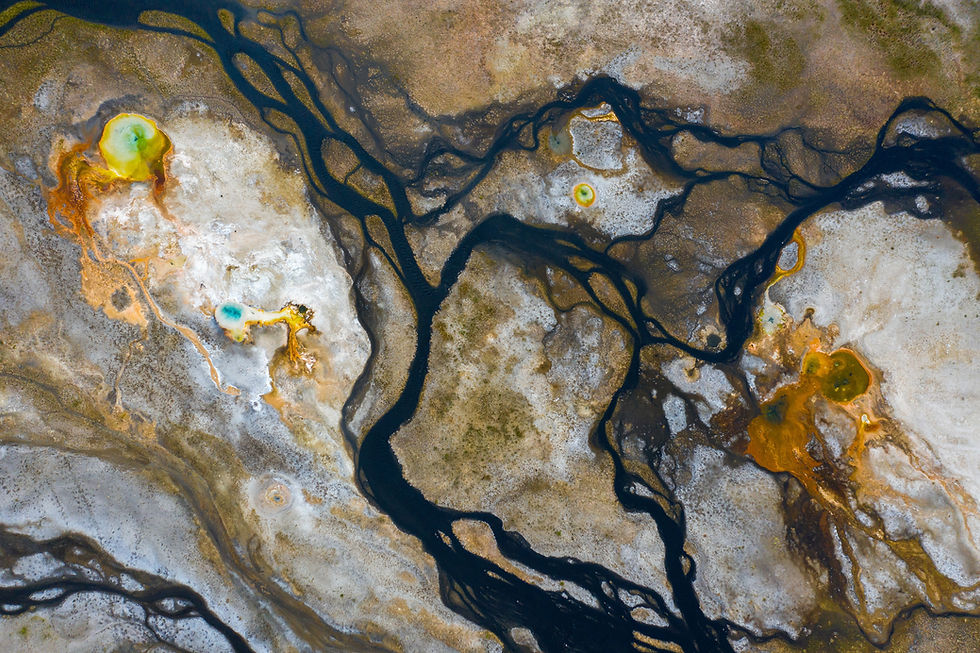Beyond OOIP: How to Create a Geomechanical Sweet Spot Map for Smarter Well Placement
- Angel Solutions (SDG)

- Jul 10
- 3 min read
Updated: Jul 12
For many years, the benchmark for well placement has been a map of Original Oil In Place (OOIP). We have honed our skills in pinpointing the "sweet spots," represented by the most intense reds on our hydrocarbon saturation maps. However, in the intricate context of mature fields and unconventional plays, a crucial question frequently remains unaddressed: does this geological sweet spot also pose an operational challenge?

A zone rich in hydrocarbons might also be a zone of high stress, weak rock, or reactivation-prone faults. Drilling into such an area can lead to costly wellbore instability, failed stimulations, and sand production issues. The traditional sweet spot map tells you where the prize is, but not the true cost of retrieving it.
The new standard for intelligent reservoir development requires a more sophisticated tool: the Integrated Geomechanical Sweet Spot Map. This is not an incremental improvement; it's a fundamental shift from finding oil to engineering profitable and safe recovery.
The Problem with Siloed Analysis
The disconnect happens when our disciplines remain in their silos. A petrophysicist identifies a high-saturation zone. A geomodeler builds a beautiful 3D representation of it. But if that information isn't integrated with a geomechanical assessment, we're making decisions with only one piece of the puzzle. This leads to unforeseen challenges during drilling and completion—challenges that directly impact project economics and safety.
Building the Integrated Sweet Spot Map: A Modern, Data-Driven Workflow
Creating a map that balances opportunity with risk is a practical, step-by-step process that leverages the full power of modern subsurface modeling.
Define Geomechanical Risk
First, we move beyond just petrophysical properties. Using a 3D geomechanical model, we identify and map the areas of concern. This "Geomechanical Risk" volume highlights zones with high stress, low rock strength, or proximity to critically stressed faults. This is the map of what to avoid or approach with caution.
Define Reservoir Quality
Next, we leverage the traditional petrophysical workflow to create a "Reservoir Quality" volume. This composite property combines the key drivers of productivity: effective porosity (PHIE), hydrocarbon saturation (1-Sw), and permeability (k). This is the map of what to target.
The Power of Integration and AI/AutoML
This is the critical fusion step where we combine these two opposing forces. Manually integrating these complex, multivariate datasets can be challenging. This is where Artificial Intelligence (AI) and AutoML provide a significant advantage. AI and AutoML algorithms can:
Identify complex relationships between geological properties and geomechanical risk that are not immediately obvious.
Automate the creation of a composite "Risk-Weighted Productivity Index." A simplified conceptual formula might look like this:
Sweet_Spot_Index = (Reservoir_Quality_Score) / (Geomechanical_Risk_Factor)
This calculation, performed on a cell-by-cell basis in the 3D model, intrinsically downgrades areas that may have excellent reservoir properties but are geomechanically hazardous. The resulting 3D property, and its corresponding 2D map, are your true geomechanical sweet spot maps.
Overlaying Economic Reality
The final step is to overlay economic and operational filters. What is the cost of drilling to this location? Are special completions, like gravel packs for sand control, required? This transforms the technical sweet spot map into a powerful business decision tool, allowing you to rank and prioritize opportunities based on a true risk-vs-reward profile.
Conclusion: From Technical Possibility to Economic Viability
The future of well placement optimization and reservoir development is inherently multidisciplinary. By bridging the gap between petrophysics, geomodeling, and geomechanics—and using AI and AutoML to accelerate and enhance this integration—we can create far more sophisticated and reliable decision-making tools.
The geomechanical sweet spot map shifts the focus from "Can we extract the oil?" to "What is the safest and most profitable method to develop this asset?"
Is your team making decisions based on a comprehensive understanding? If you are prepared to advance beyond traditional OOIP mapping and begin developing integrated sweet spot maps that enhance safer and more profitable well placement, we invite you to connect with us. Please contact us today to discuss how we can assist you in implementing strategic workflows similar to the one described.



Comments